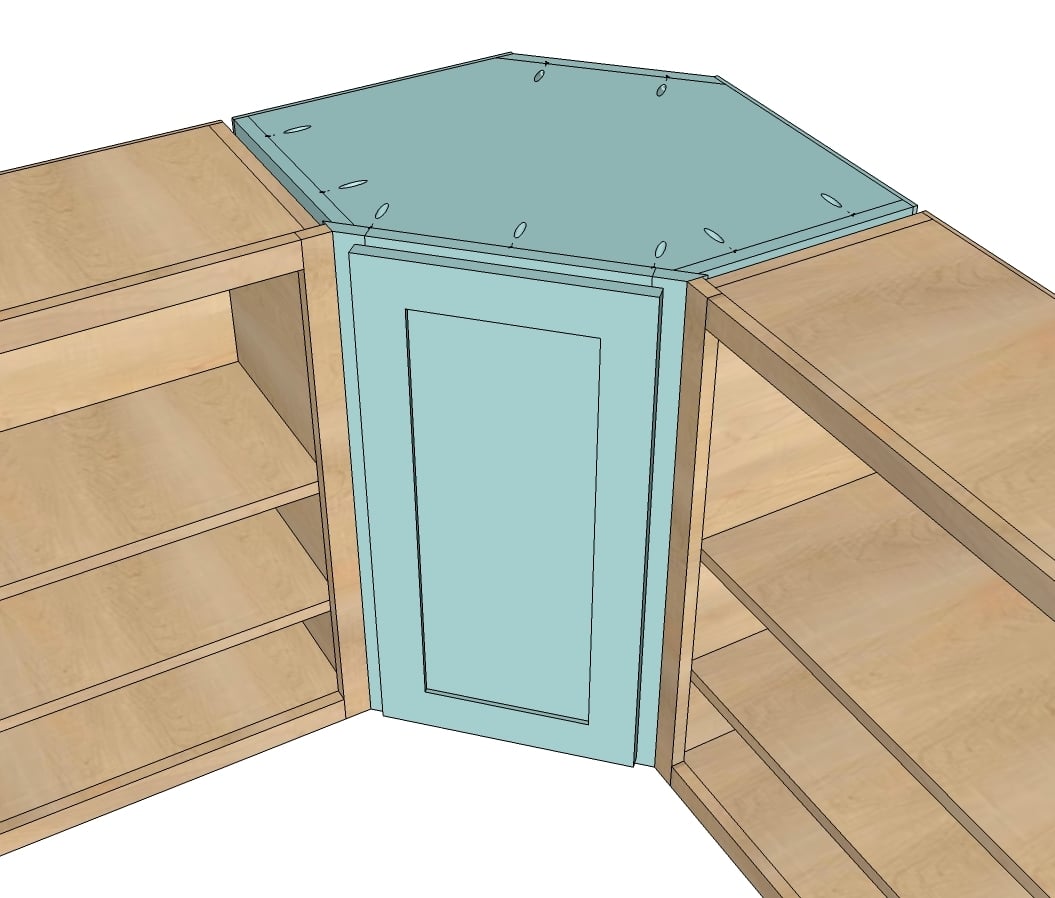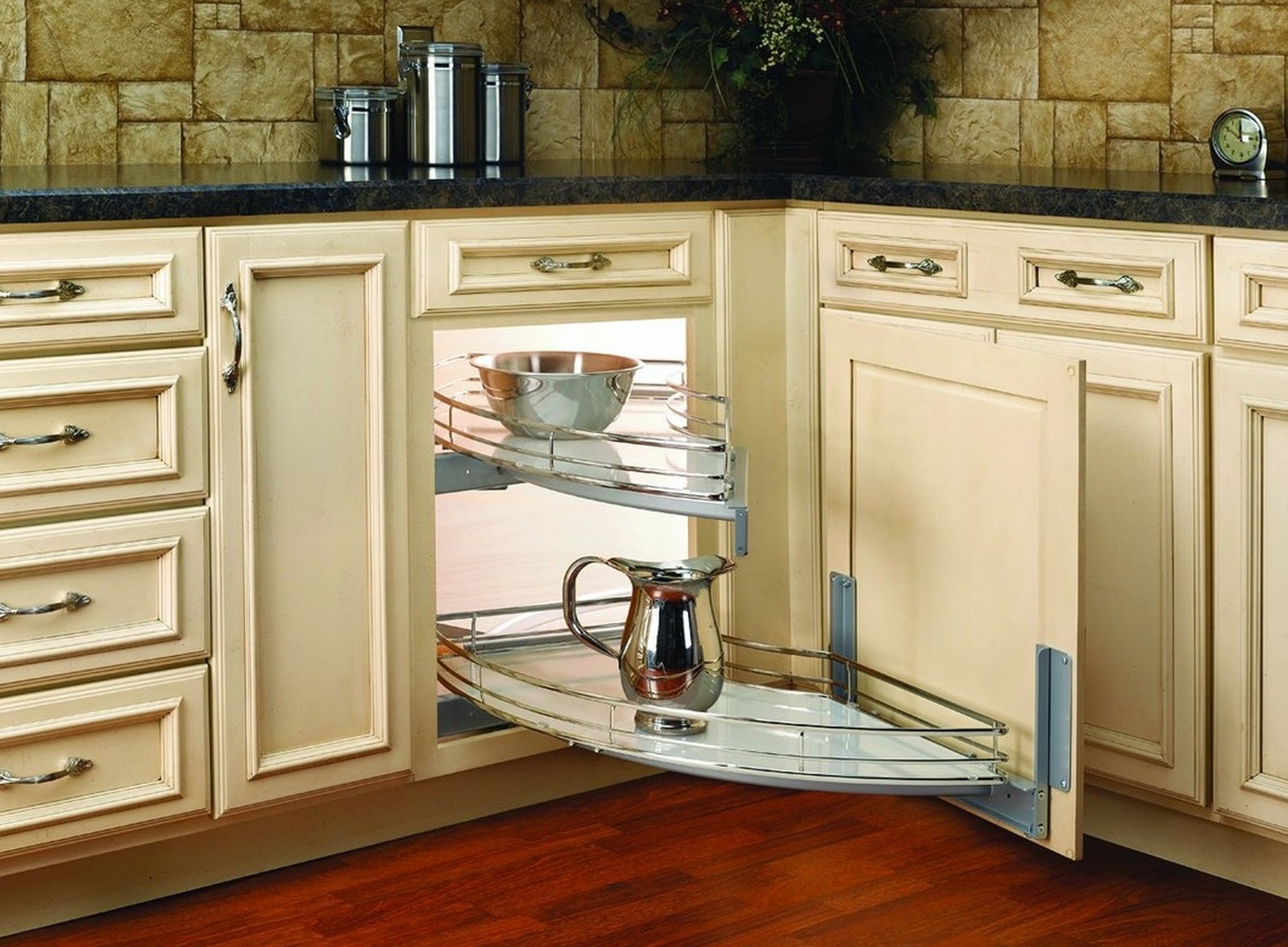Benefits of Small Corner Kitchen Wall Cabinets

Small kitchens are a common challenge, especially in urban areas like Surabaya. But, with a little creativity and the right furniture, even the tiniest kitchen can be transformed into a functional and stylish space. One key to unlocking a small kitchen’s potential is by incorporating corner cabinets. These cabinets are a game-changer, offering a unique blend of functionality and aesthetics that can elevate your kitchen design.
Maximizing Space with Corner Cabinets
Corner cabinets are like hidden treasures in small kitchens. They utilize otherwise wasted space, allowing you to store more items without sacrificing valuable floor space. Imagine the possibilities! You can store everything from cookware and appliances to spices and pantry staples, freeing up your countertops and making your kitchen feel more spacious.
Aesthetic Appeal of Corner Cabinets
Corner cabinets are more than just storage solutions. They can also enhance the visual appeal of your kitchen. Their unique shape adds a touch of modern flair to your kitchen design, creating a focal point that draws attention and complements the overall aesthetic. Think of it as a design element that adds character and dimension to your kitchen.
Improved Kitchen Organization and Functionality
Corner cabinets are like magic when it comes to organization. They offer a dedicated space for specific items, ensuring your kitchen is neat and tidy. Imagine the satisfaction of knowing exactly where everything is! Plus, by keeping your kitchen organized, you can easily find what you need and cook your meals with greater efficiency.
Types of Small Corner Kitchen Wall Cabinets

Small corner kitchen wall cabinets are not just about maximizing space; they come in various styles, each offering unique features and functionalities. Let’s explore the different types of corner cabinets and how they can transform your kitchen.
Swing-Out Corner Cabinets
Swing-out corner cabinets are a practical choice for accessing hard-to-reach areas. These cabinets have doors that swing out, making it easy to reach items stored in the corners. The doors are often equipped with hinges that allow them to open fully, revealing the entire contents of the cabinet. Swing-out corner cabinets are ideal for storing frequently used items like plates, bowls, and cookware.
Lazy Susan Corner Cabinets
Lazy Susan corner cabinets feature a rotating platform that allows you to access items stored in the corners. This type of cabinet is perfect for storing bulky items like pots, pans, and baking sheets. By rotating the platform, you can easily reach any item without having to strain or reach into the corner. Lazy Susan cabinets are available in various sizes and configurations, making them adaptable to different kitchen layouts.
Magic Corner Corner Cabinets
Magic corner corner cabinets are a sophisticated solution for maximizing space and improving accessibility. These cabinets feature a two-tiered system that allows you to easily access items stored in the corners. The bottom tier typically slides out, while the top tier rotates. This innovative design allows you to reach even the most difficult-to-access items without having to move other items out of the way. Magic corner cabinets are a popular choice for homeowners who want a sleek and functional corner cabinet solution.
Materials for Corner Cabinets, Small corner kitchen wall cabinet
Corner cabinets are constructed using a variety of materials, each offering unique properties and aesthetics. Some common materials include:
- Wood: Wood is a classic choice for corner cabinets, offering durability, warmth, and a natural aesthetic. Common wood types used include oak, maple, cherry, and walnut.
- Metal: Metal corner cabinets offer a sleek and modern look. Stainless steel is a popular choice due to its durability and resistance to rust and corrosion. Aluminum is another option, known for its lightweight and affordability.
- Laminate: Laminate is a cost-effective and versatile material for corner cabinets. It comes in a wide range of colors, patterns, and finishes, making it easy to match your kitchen décor. Laminate is also durable and easy to clean.
Designing and Installing Small Corner Kitchen Wall Cabinets

Designing and installing small corner kitchen wall cabinets can be a game-changer for maximizing space in your kitchen. These cabinets offer a unique solution to utilize often-forgotten corners, providing extra storage for your kitchen essentials. By strategically planning and installing them, you can unlock the full potential of your small kitchen.
Corner Cabinet Design Tips
Corner cabinets can be incorporated into a small kitchen layout in various ways, maximizing storage space while maintaining a cohesive aesthetic.
- Maximize Corner Space: Corner cabinets are ideal for storing items you don’t use frequently, such as seasonal cookware, extra dishes, or infrequently used appliances. This frees up valuable space in your main cabinets for everyday items.
- Consider Cabinet Depth: The depth of your corner cabinets will affect how accessible the items stored inside are. Shallow cabinets, about 12 inches deep, are easier to reach and are perfect for storing lighter items. Deeper cabinets, up to 24 inches, can accommodate larger items but may require a pull-out shelf or carousel for easier access.
- Optimize Cabinet Layout: The layout of your corner cabinets should be designed to maximize accessibility and functionality. Consider using a combination of shelves, drawers, and pull-out trays to organize different items effectively.
- Choose the Right Door Style: Corner cabinets come with different door styles, including single doors, double doors, and bi-fold doors. The best choice depends on your preference and the available space. Single doors are simple and space-saving, while double doors offer wider access. Bi-fold doors are ideal for narrow spaces and allow for maximum accessibility.
Choosing the Right Size and Configuration
The size and configuration of your corner cabinets are crucial factors to consider for optimal functionality and aesthetics.
- Measure Your Corner: Before purchasing corner cabinets, accurately measure the available space in your kitchen corner. This will help you determine the right size and configuration for your needs.
- Consider Cabinet Shape: Corner cabinets come in different shapes, including L-shaped, triangular, and diagonal. L-shaped cabinets are the most common and offer a large storage area. Triangular cabinets are compact and space-saving, while diagonal cabinets provide a unique look.
- Choose the Right Configuration: Corner cabinets can be configured with various features, such as shelves, drawers, and pull-out trays. Consider your storage needs and the size of the items you want to store when choosing the right configuration.
- Think About Accessibility: Ensure that your corner cabinets are accessible. If you have limited mobility, consider using pull-out shelves or carousels to make it easier to reach items in the back of the cabinet.
Installing Small Corner Kitchen Wall Cabinets
Installing small corner kitchen wall cabinets can be a DIY project if you have basic carpentry skills. Here’s a step-by-step guide to help you get started:
- Prepare the Wall: Start by cleaning the wall where you plan to install the cabinets. Use a stud finder to locate the wall studs, as this will be where you will attach the cabinet to the wall.
- Mark the Cabinet Position: Use a level to mark the desired position of the cabinet on the wall. Make sure the cabinet is level and plumb before drilling any holes.
- Attach the Cabinet: Attach the cabinet to the wall using screws or nails. Ensure the cabinet is securely fastened to the wall studs for stability.
- Install Shelves and Drawers: Once the cabinet is attached, install any shelves, drawers, or other features you have chosen.
- Hang the Doors: Install the doors on the cabinet, ensuring they are properly aligned and function smoothly.
A small corner kitchen wall cabinet can be a real game-changer for maximising space, but if you’re looking for something a bit more robust, you might want to consider a middle atlantic wall mount cabinet. These bad boys are built for heavy-duty use and can be customised to fit your needs perfectly.
Whether you’re storing your vintage vinyl collection or your prized collection of vintage kitchenware, a small corner kitchen wall cabinet can be a stylish and practical solution.
A small corner kitchen wall cabinet can be a real space saver, but it can also be a bit of a pain if the door keeps getting stuck. This is a common problem, especially if the cabinet is installed too close to the wall, which can make it difficult to open the door fully.
If you’re struggling with this issue, you’re not alone – check out this article on cabinet doors too close to the wall for some tips on fixing it. Once you’ve sorted out the door issue, you’ll be able to enjoy all the extra storage space your new corner cabinet provides!